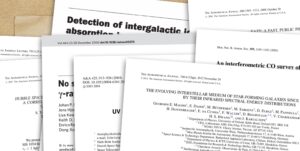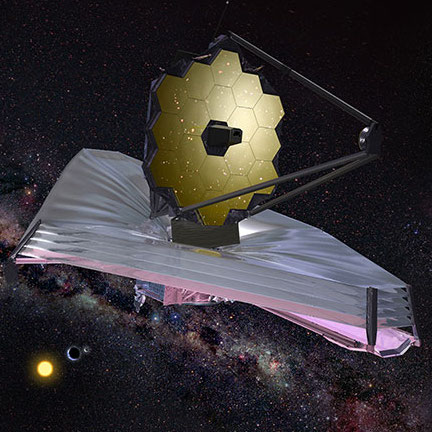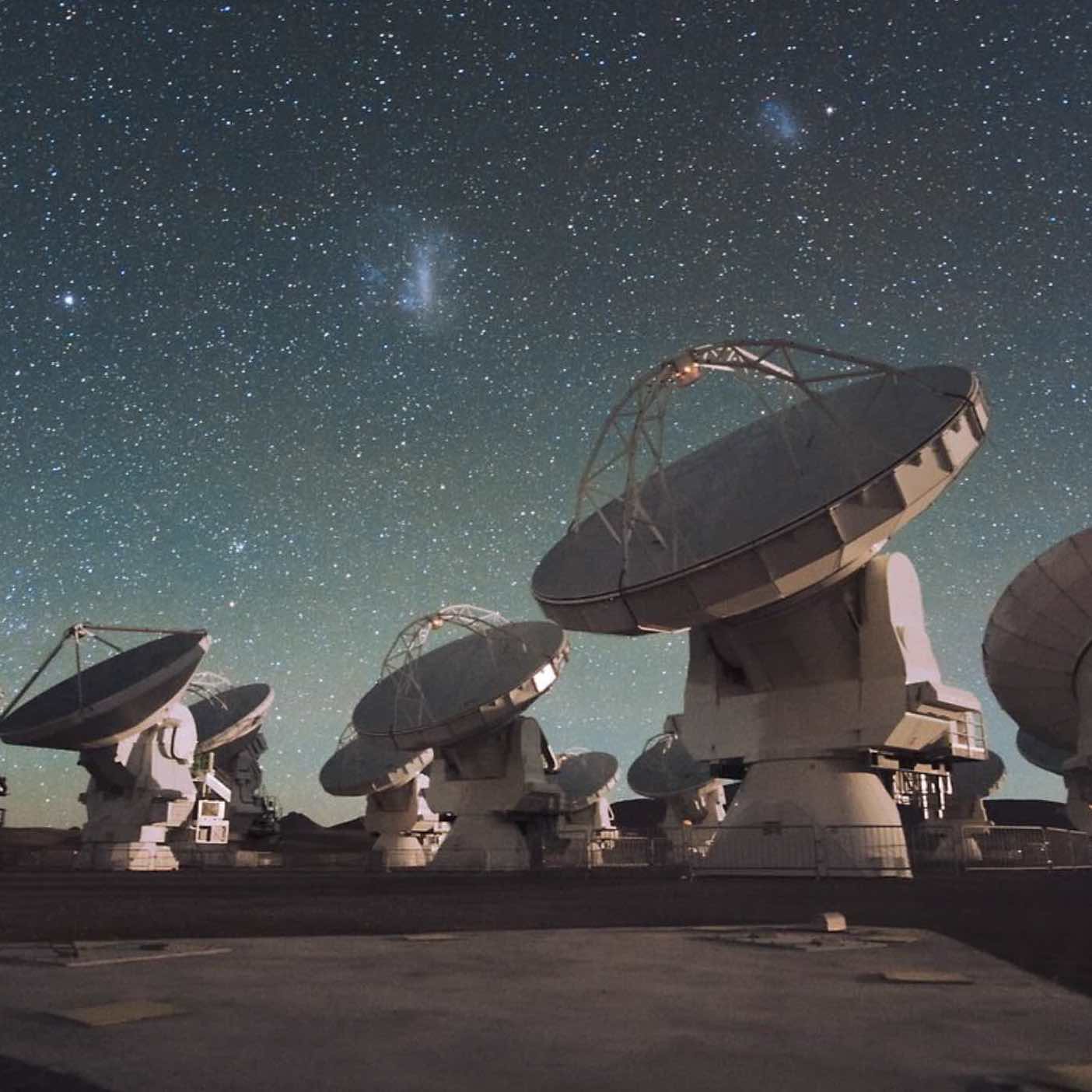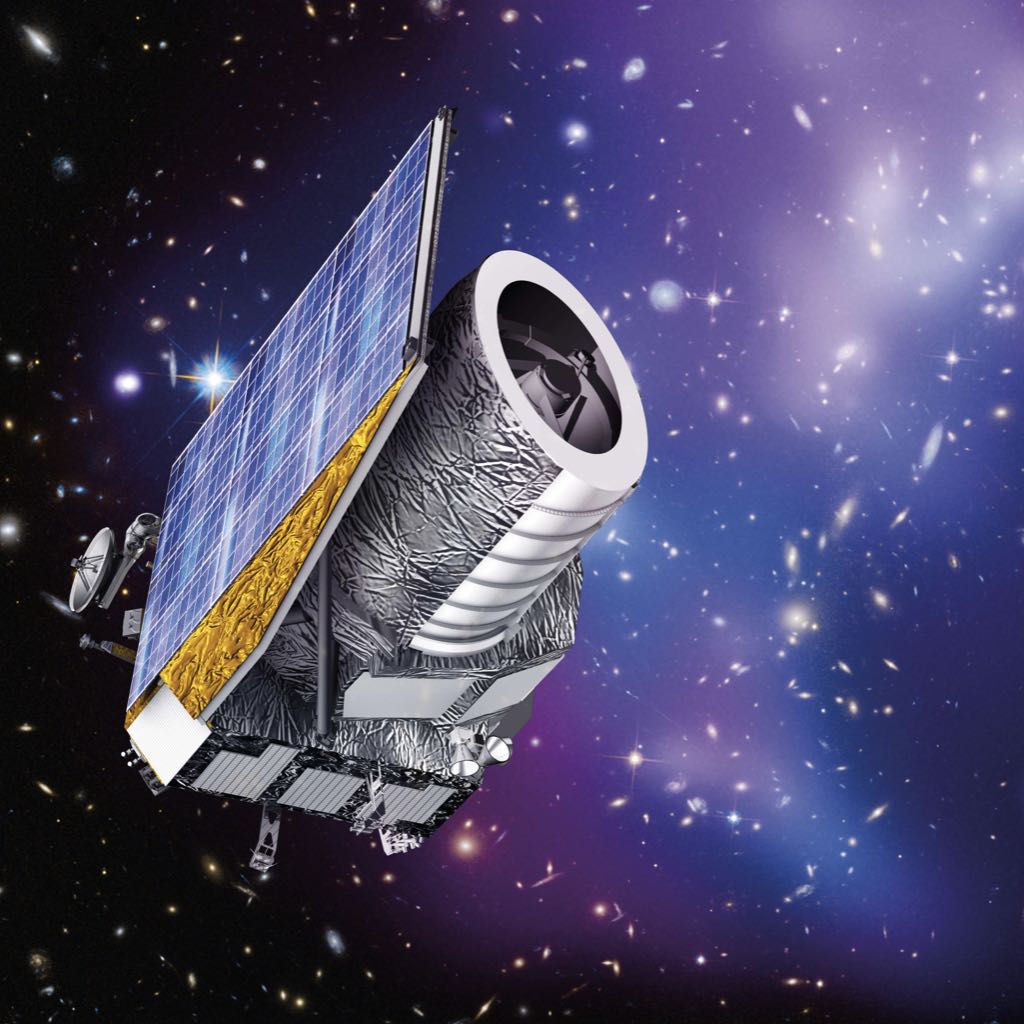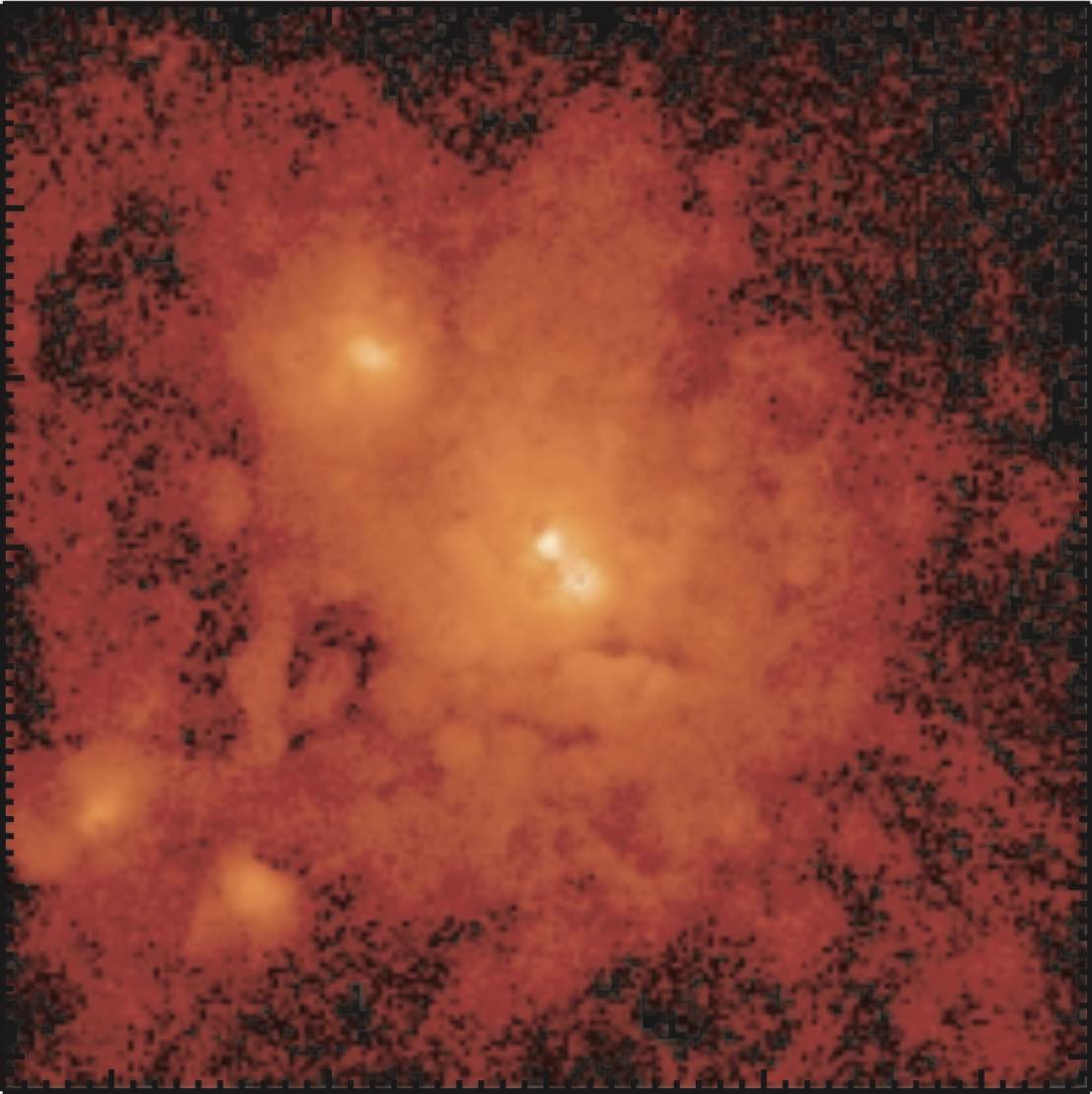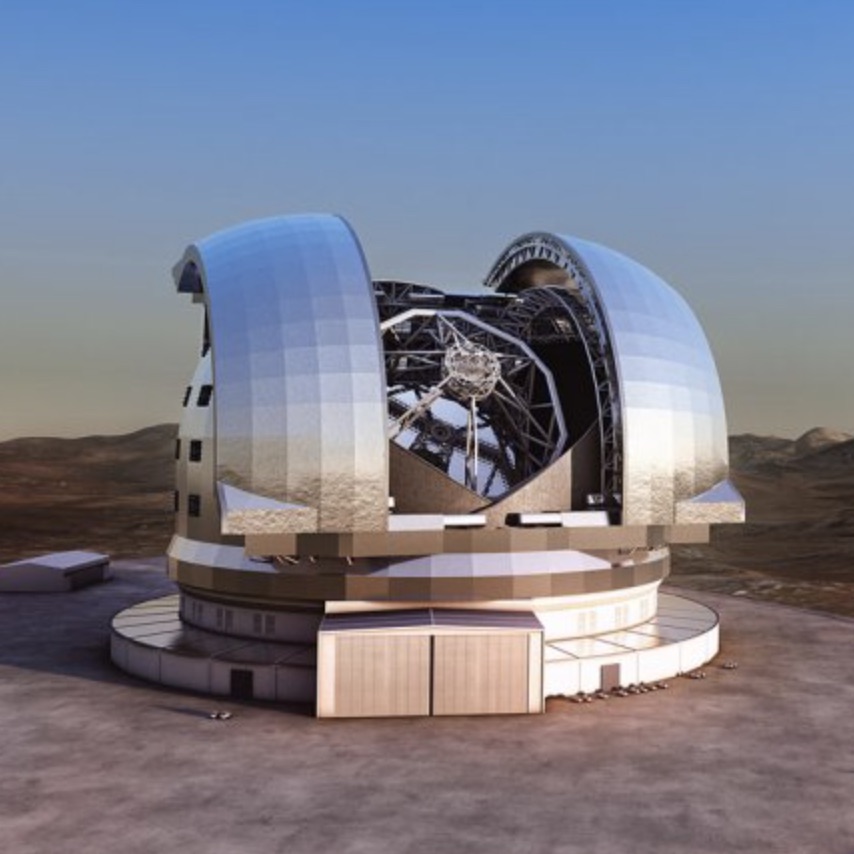Instruments and Methods
Astronomers at DAWN explore the Universe with a suite of state-of-the art telescopes, designed to study the most distant galaxies. Here is a list of the most important facilities, either active or under construction. Data collected from those telescopes are analyzed with innovative techniques, which are also described below.
For an overview of the observational surveys in which DAWN is involved, click here.
James Webb Space Telescope (JWST)
With a planned launch in 2020 2021, the James Webb Space Telescope (JWST) is designed to study the stars and gas in the first galaxies. JWST's primary mirror is 6.5 m in diameter, and is equipped with four infrared instruments for imaging and spectroscopy. DAWN scientists have partaken in the construction of three of these instruments (NIRSpec, MIRI, and NIRISS), and will be involved in the analysis of the first data from the telescope.
Atacama Large Millimeter Array (ALMA)
ALMA is the worlds largest radio telescope, located on the Chajnantor Plateau in the Atacama Desert in Chile, one of the highest and driest places on Earth.
Astronomers at DAWN use ALMA to study the emission lines and continuum from the cold and dusty environments that compose the interstellar medium (ISM). The reason behind this is the fact the molecular hydrogen — a fuel for star formation — can only exist in these cold regions of the galaxy. The investigation of these environments is complimentary to the study of hot gas and stellar emission and is imperative in furthering our understanding of galaxy evolution.
The telescope is composed of 66 high precision antennae, each with a diameter of 12m, which act together as a single telescope. ALMA is designed to observe emission from cold dust and gas in the early Universe, complementing JWSTs observations of the hot gas and stars in the first galaxies.
Euclid mission
Following its launch in 2023, the ESA/Euclid mission will map out a large part of the sky, with the primary goal of constraining the nature of Dark energy. As part of its calibration plan, Euclid will observe 40 square degrees to great depth, the so-called Euclid Deep Fields. These fields will be a treasure trove for finding rare, bright early galaxies.
DAWN scientists play a leading role in the exploration of these deep fields, and will have early access to samples of early galaxies for follow up observations with JWST and ALMA.
Data-driven astronomy
Fully understanding complex astrophysical data demands state-of-the-art techniques. DAWN is a major developer of data processing software, to be shared with the wider community.
To support the Cosmic Dawn Survey, we have developed 'The Farmer', a bleeding-edge framework to construct 2D models of millions of galaxies in order to measure their properties more accurately than ever before.
Simulations
To understand and interpret our observations, as well as to predict the possible outcome of a survey, we model and simulate the Universe on small and large scales.
On the largest scales we can simulate how galaxies reionized the Universe, while on smaller scales, hydrodynamical simulations tell us how galaxies form and evolve. Coupled with radiative transfer simulations of the light emitted by the stars and gas, realistic images of these synthetic galaxies are tremendously helpful in understanding our observations.
Preparing next-generation missions
"Experience, if thereof thou trial make, The fountain whence your arts derive their streame." says Beatrice in Dante’s divine comedy. Research progress in natural science hinges tightly on the development of new instruments that allows for exploration of phenomena that have hitherto been out of reach of research.
Staff members at the Cosmic Dawn center are also intimately involved in developing new instruments or concepts for new instruments that will open new windows to the cosmos.
Click below to read more about these instruments:

